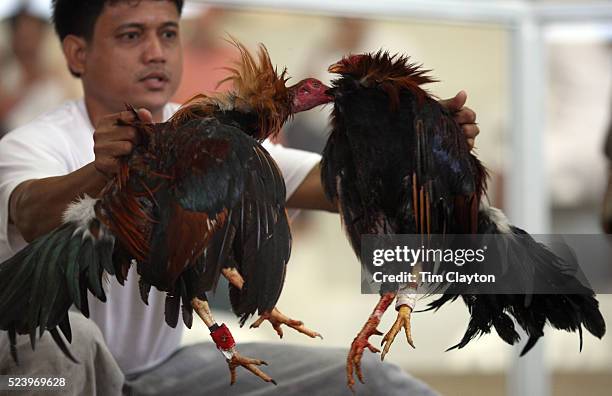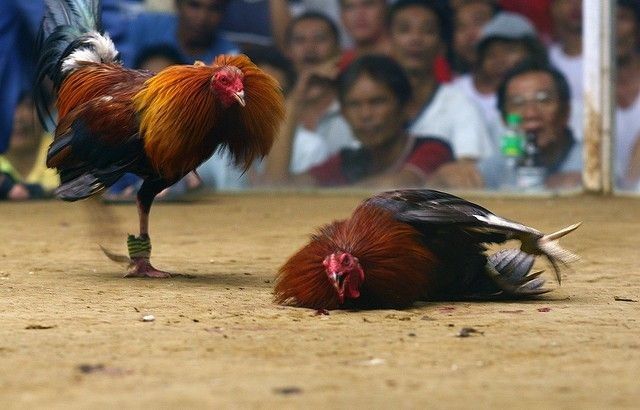The Legacy of a Sabong Grandmaster: Influencing Modern Cockfighting Techniques
The Legacy of a Sabong Grandmaster: Influencing Modern Cockfighting Techniques
Blog Article
Secrets of the Sabong Grandmaster: Grasping the Art of Cockfighting
The complex world of cockfighting, particularly as exercised by the Sabong Grandmaster, uses a remarkable research study in the assemblage of animal actions, training methods, and affordable method. To genuinely comprehend the subtleties of this art kind, one have to discover how the Grandmaster harmonizes the physical and mental aspects of fowl training while navigating the honest considerations integral in this traditional method.
Background of Cockfighting

As the centuries advanced, cockfighting spread across numerous continents, adjusting to neighborhood customs and social characteristics. In medieval Europe, it got appeal among the nobility, that regarded it as a display of wide range and condition. By the 17th century, the sporting activity had actually developed itself in England, resulting in the development of defined laws and policies.
In the Americas, especially in the Caribbean and the Philippines, cockfighting took on one-of-a-kind qualities affected by early american histories and aboriginal methods. Today, while the sporting activity remains questionable and deals with legal difficulties in many regions, its historical relevance proceeds to stimulate discussions about pet civil liberties, social heritage, and societal values. The advancement of cockfighting reflects wider themes of human interaction with nature and the complexities of tradition.
Recognizing Rooster Behavior
Understanding fowl behavior is necessary for those associated with the sport of cockfighting, as it directly influences health and wellness, training, and efficiency. Fowls exhibit an array of actions that can show their psychological and physical states. Especially, aggressiveness, territoriality, and social power structure play significant duties in their attitude.
Aggression is an all-natural reaction in roosters, mainly driven by the demand to insist prominence. Observing communications among roosters can expose their position, which is essential for handling their environment. A positive fowl presents an extra assertive posture, while a submissive one may show indications of tension or fear, such as crouching or preventing eye contact.

Training Methods for Champions
Efficient training techniques are vital for creating champ fowls that master the competitive arena of cockfighting. An organized technique guarantees that each bird reaches its full capacity, incorporating physical fitness with psychological fortitude.
To begin, developing a constant training regimen is essential - Sabong Grandmaster. This includes day-to-day exercises that improve stamina, dexterity, and endurance. Regimens may include regulated competing sessions with both fabricated and online opponents to replicate competitors, enabling roosters to develop their battling abilities in a safe atmosphere
Incorporating dexterity drills, such as barrier courses and jumping workouts, substantially enhances a rooster's physical capabilities. Additionally, introducing varied surface areas and surfaces can improve their versatility during battles.
Mental training ought to not be forgotten. Acquainting the birds with the audios and views of an affordable environment can lower anxiety and anxiousness on fight day. Favorable reinforcement techniques, such as gratifying desirable habits, can instill confidence in the fowls.
Last but he said not least, maintaining a tranquility and assertive visibility during training sessions cultivates count on in between the handler and the fowl, crucial for achieving ideal performance. With each other, these techniques create a thorough training regimen that cultivates champions prepared to master the arena.
Health And Wellness and Nutrition Fundamentals

Including a mix of wheat, corn, and barley provides essential carbohydrates, while protein sources such as fish meal, soybean meal, or pests support muscle advancement and recuperation. Additionally, incorporating fresh vegetables and fruits can enhance the total dietary account, supplying antioxidants that increase the body immune system.
Hydration is just as vital. Access to clean, fresh water should be a concern, as dehydration can drastically influence performance (Sabong Grandmaster). Routine health examinations are necessary to check for any kind of potential diseases or bloodsuckers that could endanger a fowl's condition
Additionally, the timing of feed is essential. Offering nourishment at appropriate periods makes certain that fowls keep energy degrees throughout their training and recuperation stages. By concentrating on these health and nourishment essentials, sabong enthusiasts can aid their fowls accomplish optimum efficiency in the competitive sector.
Approaches for Successful Matches
Success in cockfighting depend upon a combination of critical prep work and in-ring techniques. Efficient suit techniques begin long before the battle, with mindful choice of the rooster. Breeders should prioritize hereditary characteristics such as aggressiveness, resilience, and endurance, ensuring that the picked bird shows a strong lineage of performance.
Training is important; fowls need to be conditioned via a routine that consists of workout, sparring with various other birds, and exposure to various settings. This prep work not just constructs strength but likewise boosts the bird's flexibility to different opponents.
During the suit, a handler has to utilize keen monitoring and fast decision-making. Acknowledging the opponent's methods enables prompt changes, such as shifting the rooster's position or encouraging much more aggressive habits. Timing is critical; recognizing when to limit the bird or urge can indicate the distinction in between victory and loss.
Last but not least, preserving a tranquil disposition during matches cultivates confidence in the rooster. A well balanced technique, incorporating both physical and mental preparedness, ultimately causes successful results in the arena, demonstrating that mastery in cockfighting is as much concerning strategy as it has to do with the birds themselves.
Verdict
The mastery of cockfighting, as exemplified by the Sabong Grandmaster, rests on a detailed understanding of fowl behavior, effective training techniques, and ideal health and nourishment. By integrating traditional exercise with modern-day techniques, champs are cultivated, showcasing phenomenal toughness, browse around this site dexterity, and resilience. Strategic insights during suits better enhance the possibility of success. Ultimately, the secrets of the Sabong Grandmaster depend on the unified equilibrium of these aspects, making sure the continued tradition of this ancient sporting activity.
To really understand the nuances of this art form, one should explore just how the Grandmaster harmonizes the mental and physical aspects of rooster training while browsing the moral considerations intrinsic in this standard method.Understanding fowl behavior is important for those entailed in the sporting activity of cockfighting, as it directly influences health and wellness, training, and efficiency.Maintaining optimal health and wellness and nourishment is vital for guaranteeing that fowls get to peak efficiency in the cockfighting sector. Providing nutrients at appropriate periods makes sure that fowls keep energy degrees throughout their training and recovery stages.The mastery of cockfighting, as exemplified by the Sabong Grandmaster, hinges on a detailed understanding of rooster behavior, efficient training techniques, and next page optimal health and wellness and nourishment.
Report this page